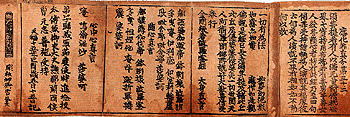Research Project
|
|
|
Our project "Merit, Opulence and the Buddhist Network
of Wealth" concentrates on one specific period of
artistic brilliance when these cultural traditions were
most evident. During the 10th century, when the region
became independent as the Tang empire collapsed to the
East, the arts industries were Under the direction of Sarah E. Fraser, specialists in art history, archaeology, religious studies, history and decorative arts from China, America, Europe and Taiwan will conduct fieldwork in China and produce a book-length volume on the opulence in Buddhist art and monastic culture. The electronic edition of this text will form the core of our project web site. On-site investigations will also include three regions of Sichuan, where a similar trend occurred in the 10th century, expanding the implications of our work to hundreds of sites throughout western China.
|
